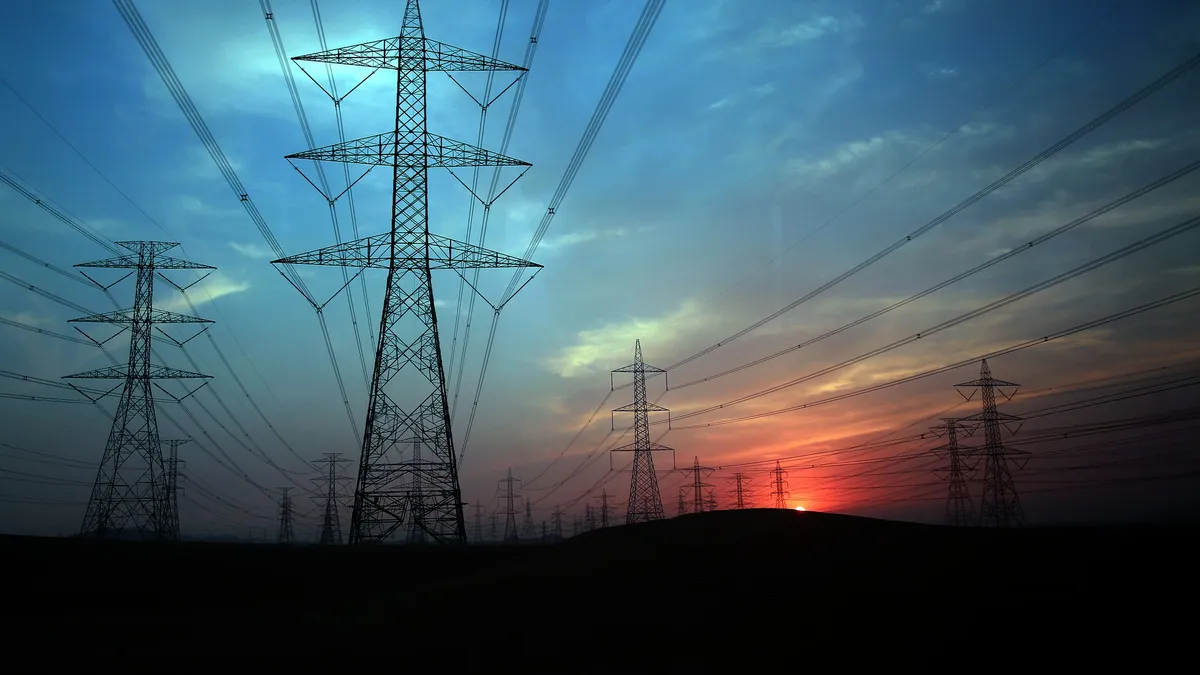Dive Brief:
-
The Federal Energy Regulatory Commission on Thursday upheld its order overhauling its implementation of the Public Utility Regulatory Policies Act (PURPA), and issued a Notice of Proposed Rulemaking (NOPR) to reform transmission line ratings.
-
Transmission and clean energy advocates were pleased with the commission's action on line ratings, considered a "tool stuck in limbo" that could help renewables waiting in long interconnection queues connect to the grid, while improving the overall efficiency of transmission lines. Meanwhile, the solar industry was frustrated by the commission's decision to uphold its controversial PURPA rule.
-
FERC also denied rehearing on its 2018 Competitive Auctions with Sponsored Policy Resources (CASPR) order, a program proposed by the New England Independent System Operator (ISO-NE) to reform its capacity market. Commissioner Richard Glick dissented on the CASPR and PURPA order decisions, both of which he had initially opposed.
Dive Insight:
Glick's dissents on Thursday repeated his assertions that the commission has surpassed its jurisdiction in a number of instances — including impeding on state policies through regional grid operator rules, and updating enforcement of a federal law without input from Congress. But on transmission, there continues to be bipartisan consensus.
FERC's Thursday NOPR proposed action to improve the transparency and accuracy of transmission line ratings.
Line ratings indicate the maximum power a line can conduct safely, and under today's practices, line ratings are based on "conservative assumptions about the worst-case, long-term" weather conditions, according to FERC. Ambient-adjusted or dynamic line ratings are more accurate, according to FERC's Thursday presentation, and backed by transmissions advocates. The NOPR would require transmission providers to implement such ratings, require grid operators to establish the procedures necessary for providers to be able to do this, and increase information sharing among all parties.
The commission also upheld its PURPA final rule, issued in July, intended to give states more "flexibility" in implementing the law, according to former-FERC Chair Neil Chatterjee.
The rule allows states to set the rates paid to qualifying facilities (QFs) at a variable wholesale rate rather than a fixed cost, reduces the size of a project that is subject to such rates from 20 MW to 5 MW, and modifies the one-mile rule to prevent aggregation, among other things.
Several groups filed requests for rehearing in August, arguing that the changes disadvantage small power providers.
FERC dismissed the arguments in upholding the rule Thursday, while Glick argued the order was not based on a sufficient record, and further oversteps the commission's regulatory duties.
"It doesn't matter whether you believe PURPA offers substantial benefits or whether you think it's bad public policy. The fact is these are matters for our elected representatives in Congress to decide," he said. "We should not be using our regulatory authority just because some might be frustrated by Congress' inaction."
The Solar Energy Industries Association (SEIA) in September challenged the rule in the Ninth Circuit Court of Appeals, and says it is "confident in the end that the court will conclude that this order represents an attempt to tip the scales in favor of monopoly interests, forgoing substantial cost savings."
"The commission's attack on PURPA is an attack on competition and provides another policy gift to incumbent utilities at the expense of consumers," Sean Gallagher, SEIA vice president of state affairs, said in a statement.
FERC also upheld its 2018 order allowing ISO-NE to reform its capacity market auctions in order to prevent state subsidies from depressing market power prices, similar to efforts in the PJM Interconnection. The resulting CASPR rule has been floated by generator Calpine as a potential tool to mitigate PJM's own Minimum Offer Price Rule expansion. Though the majority of FERC views these orders as mitigating state policy "market distortions," Glick says the CASPR and other policies are unduly harming state resource decisions.
"The record demonstrates that CASPR is failing miserably at accommodating those [state] policies," said Glick. "It's abundantly clear the Commission's approach to … MOPRing certain state resources in the three Eastern RTOs is just not sustainable."















